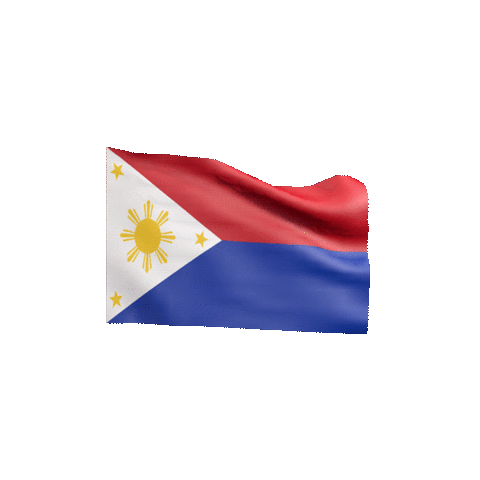Health

COVID-19 & the philippines
On March 11, 2020, the World Health Organization officially characterized the coronavirus (COVID-19) outbreak as a pandemic (World Health Organization [WHO], 2020b). COVID-19 is an infectious disease that can cause respiratory illness and has led to fatalities in the elderly and those who are immunocompromised or have underlying comorbidities (WHO, 2020a). According to the Centers for Disease Control and Prevention (CDC, 2020b), it is transmitted primarily through droplets such as saliva or discharge from the nose when an infected individual sneezes or coughs. Symptoms include fever, cough, and shortness of breath. There is currently no vaccine against COVID-19, nor is there a specific antiviral treatment. The CDC recommends that the best way to prevent infection is to avoid being exposed to it. For those who are positive for the virus, they recommend seeking medical care to relieve symptoms (CDC, 2020b).
Cases of the virus were first detected in Wuhan, China during the period of December 12 to December 29, 2019. On February 2, 2020, a man in the Philippines died from the virus-- marking the first death outside of mainland China since the outbreak (CNN Editorial Research, 2020).

The spread of COVID-19 [Inforgraphic]. (2020). Retrieved from https://images.app.goo.gl/6R9n3K9dzXdWgKBe8
challenges to PRevention and control
The Philippine government has been highly criticized for the way it has handled the COVID-19 outbreak. However, the Philippines is struggling with a lack of resources and guidance from its leaders. Frank and Grady (2020) assert that poor communication and the inability to compromise had delayed decision-making which could have possibly contained the virus sooner. Government officials had contradicted each other in discussing what the Philippines lockdown will entail, such as who is allowed to go outside, whether or not public transport will continue and whether food producers will continue to work (Frank and Grady, 2020). Santos (2020) stated that the country does not have enough tests for the virus and personal protective equipment (PPE) is limited. One nurse states that their surgical masks are “as this as tissue paper” but they “don’t have a choice” (Santos, 2020, para.16). Santos (2020) adds that there is a lack of health care personnel to care for the infected. The doctor-to-patient ratio in the Philippines is estimated to be around one doctor for every 33,000 patients, and only one hospital bed is available for every 1,121 Filipino patients. The lack of healthcare personnel derives from the low-pay and quick turnaround of many Filipino hospitals. One nurse states that there are “standard protocols for the handling of new and emerging diseases. But quick turnaround of health workers, who seek higher-paying jobs in other hospitals or outside the country, makes it difficult to implement the policy” (Santos, 2020, para. 12).

Translation: "There are no more face masks of any kind"
A sign is posted on a medical supply store that says surgical and N95 masks are already out of stock, in Manila, Philippines {Photograph} (2020). Retrieved from https://asia.nikkei.com/Spotlight/Coronavirus/Philippines-reports-first-coronavirus-death-outside-China
precautionary measures
Duddu (2020) reported that the Philippines government has imposed several restrictions and closures to control the spread of the virus. In Manila, schools and colleges are closed from March 9 to April 12, 2020. In addition, social distancing measures are in place for thirty days beginning March 15th, which includes the prohibition of large gatherings such as concerts, movies, and parties. Several cities in the Philippines have also imposed an 8 p.m. to 5 a.m. curfew. Travel restrictions have also been implemented which bar all entry into the country except Filipino citizens and permanent resident visa holders. Filipinos traveling from China are also banned from entering the country and are to first undergo a mandatory fourteen-day quarantine. Citizens were also restricted from traveling to South Korea, as COVID-19 cases had risen significantly there (Duddu, 2020). Furthermore, the CDC has recommended that travelers “avoid all nonessential travel to the Philippines” (CDC, 2020a, para. 1)
According to Regan (2020), the Philippines government issued an “enhanced community quarantine” of the capital city of Manila to prevent the spread of COVID-19. Mass public transportation was suspended and residents have been urged to stay at home except when necessary. 70,000 police officers and army troops have sealed the city as a means of containing the virus, and individuals who violate the quarantine may face arrest. They are set up at border checkpoints around the city to check commuters for fevers (Regan, 2020).
The 2020 Philippine healthcare budget had been cut by ₱10 billion ($197 million); amidst the COVID-19 crisis, President Duterete recently stated that ₱2.25 billion ($44.5 million) would be allocated towards buying PPE, including goggles, N95 masks, gloves, and headgear for healthcare personnel (Santos, 2020).

Mass gatherings and school at all levels have been called off {Photograph} (2020). Retrieved from https://images.app.goo.gl/2kFLhrTAcTc9rR4n6

A makeshift barricade blocks a street from outsiders to protect a neighbourhood from the spread of coronavirus disease (COVID-19) in Manila, Philippines {Photograph} (2020). Retrieved from https://images.app.goo.gl/APHgVESYZzeGpS5s6
References
Centers for Disease Control and Prevention. (2020a). COVID-19 in the Philippines. Retrieved from https://wwwnc.cdc.gov/travel/notices/warning/coronavirus-philippines
Centers for Disease Control and Prevention. (2020b). What you need to know about coronavirus disease 2019 (COVID-19) [PDF]. Retrieved from https://www.cdc.gov/coronavirus/2019-ncov/downloads/sick-with-2019-nCoV-fact-sheet.pdf
CNN Editorial Research. (2020). Coronavirus outbreak timeline fast facts. Retrieved from https://www.cnn.com/2020/02/06/health/wuhan-coronavirus-timeline-fast-facts/index.html
Duddu, P. (2020). Coronavirus in Philippines: The COVID-19 risk, impact and measures. Retrieved from https://www.pharmaceutical-technology.com/features/coronavirus-affected-countries-philippines-measures-impact-tourism-economy/
Frank, A. & Grady, C. (2020). Phone booths, parades, and 10-minute test kits: How countries worldwide are fighting Covid-19. Retrieved from https://www.vox.com/science-and-health/2020/3/22/21189889/coronavirus-covid-19-pandemic-response-south-korea-phillipines-italy-nicaragua-senegal-hong-kong
Regan, H. (2020). Malaysia and the Philippines enact sweeping measures, as coronavirus cases jump in Southeast Asia. Retrieved from https://www.cnn.com/2020/03/17/asia/coronavirus-covid-19-update-intl-hnk/index.html
Santos, A. P. (2020). Philippines 'ill-prepared' as it grapples with coronavirus threat. Retrieved from https://www.aljazeera.com/news/2020/02/philippines-ill-prepared-grapples-coronavirus-threat-200218004321154.html
World Health Organization. (2020a). Coronavirus. Retrieved from https://www.who.int/dg/speeches/detail/who-director-general-s-opening-remarks-at-the-media-briefing-on-covid-19---11-march-2020
World Health Organization. (2020b). WHO Director-General's opening remarks at the media briefing on COVID-19. Retrieved from https://www.who.int/dg/speeches/detail/who-director-general-s-opening-remarks-at-the-media-briefing-on-covid-19---11-march-2020